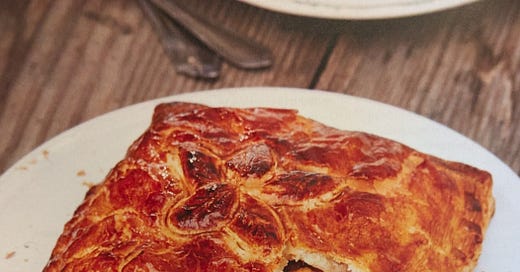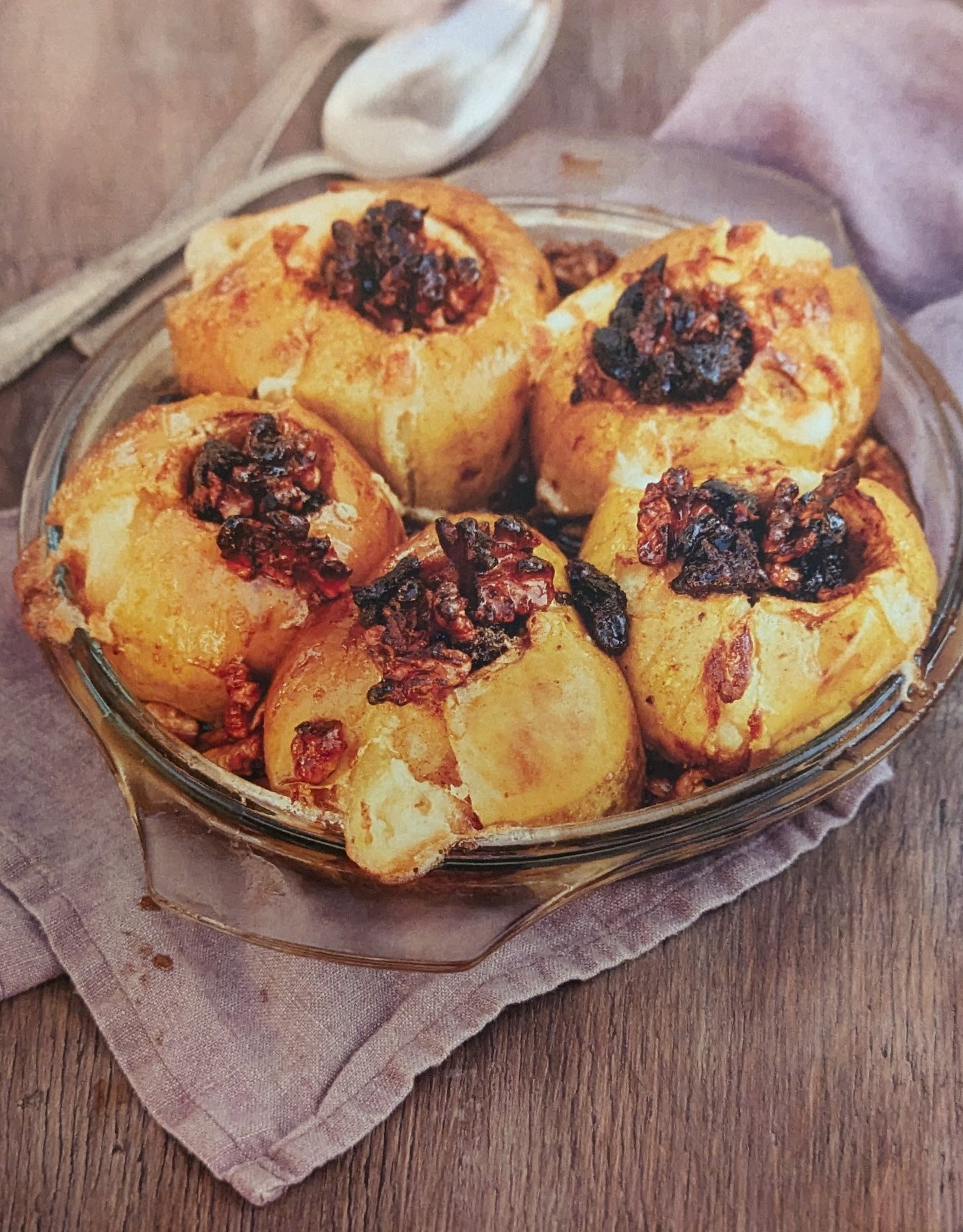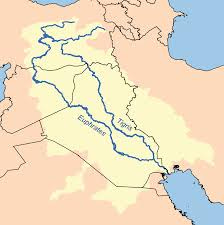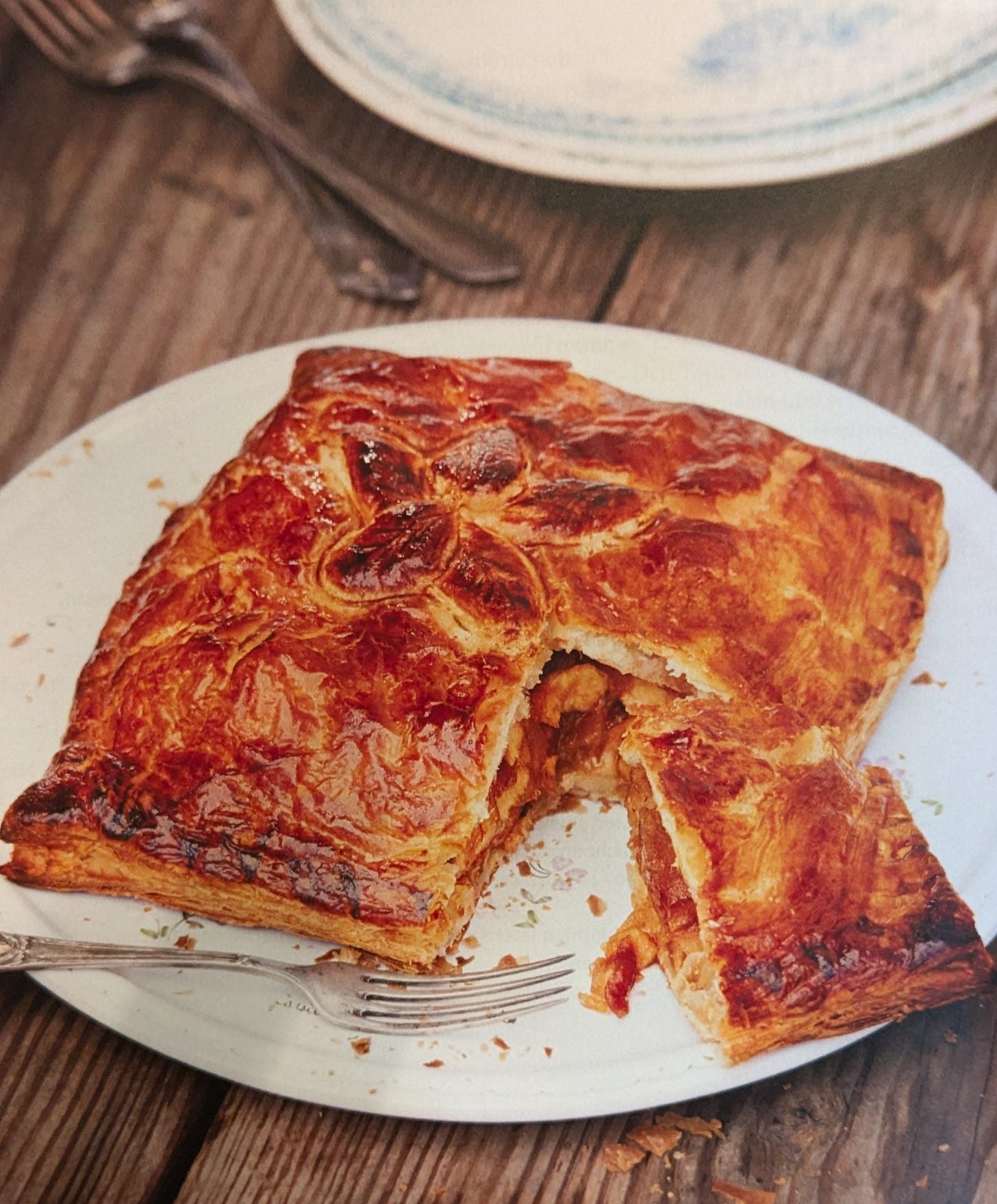Thankful for apples
A recipe for Apple Puff - and stuffed roasted ones, for Thanksgiving or after
I only blinked twice, I’m sure, but when I opened my eyes again, soft fruits were gone. Suddenly we’re back in that season when the apple comes into its own. I greet it with mixed feelings. There was a light-bulb moment when my father, who had a gnarled orchard of Beauty of Bath apple trees, confessed he really didn’t like apples. Gosh, I thought. Neither do I!
I suspect, like me, he meant apples raw. A cooked apple is something else, and this is the time of year to celebrate the way that exposing them to heat releases a buttery-spicy-caramel scent which fills the autumn house with comfort. Those cored apples above, stuffed with roughly chopped nuts and dried fruits which have first been plumped up in a bowl of port or fruit juice then baked, are one of the simplest of desserts. An apple crumble developing in the oven is an olfactory cuddle.
My sister and I used to have to wrap each wretched Beauty of Bath, not the best of apples, in newspaper to store them for over-wintering. We’d check them weekly for those that had succumbed to a squelch of rot that soaked the news headlines. This wasn’t an original idea. The 1st century AD Roman writer Pliny the Elder advised the storing of apples on straw or chaff or mats in a room with good air circulation from a north-facing window and to keep any windfalls away from picked fruits.
That method might keep them going to the middle of winter. For a supply that continued from then on till spring, in a process practised by medieval Europeans and my Yorkshire grandmother, apples were cored and peeled and either sliced into rings or kept whole, then threaded onto strings and hung up to dry. Granny Wetherby (named for the town she lived in) made apple pies on a weekly basis. In true Yorkshire fashion, they were set upon the table alongside an impressive chunk of Cheddar cheese. With each appearance, Grandpa would intone like clockwork, “An apple pie without the cheese is like a kiss without the squeeze.” Across current restaurants celebrating ‘contemporary British’ food, dessert menus trumpet the novelty move of laying slices of cheese under an apple pie’s pastry lid as though they’ve just come up with the idea.
Because of Eve, you may assume that the answer to the quiz question, “Which was the first-ever fruit?” is that serpent’s temptation growing in the Garden of Eden. But it’s far more likely, given the garden is believed to have been located somewhere in the Middle East between the convergence of the Tigris and Euphrates rivers, that she was seduced instead by a pomegranate.
The ancestors of our domestic apple are believed to have been growing in the wild along the western flank of the majestic Tian Shan mountain range in Central Asia which runs 1500 miles, straddling the border between China and Kyrgyzstan and southern Kazakhstan. The Chinese began to domesticate the apple between the 4th and 10th centuries BC, though only recently with this extra - creepy - tourist-targetted twist:
Apple cores dating back to the 10th century BC have been found at a Judean site between the Sinai and Negev. Carbon dating has put seeds of some kind of apples found near Udine in north-eastern Italy at the Sammardenchia archaelogical site somewhere between the mid-6th and the mid-5th centuries BC. But it’s not clear if they were wild or cultivated because it’s not known when the practice of grafting began.
Slowly, the apple travelled west along the Silk Road to Europe. En route, it became hybridized with a range of other wild apples, the most familiar of which is probably the crab apple. That’s the one considered the only apple native to the US before the Pilgrims arrived in the 17th century with their apple and other seeds. The first named apple cultivar was introduced in Boston in 1640 by Reverend William Blaxton, who called it the Yellow Sweeting.
The apple is the fruit with the greatest number of cultivars - the term for fruit that has been developed with the help of humans. Of the over 7,500 cultivars world wide, the UK has created more than 2,500 of them. To eat a different British apple each day would take you six years. But I challenge you to find more than a handful of them in stores.
The US grows about 200 unique varieties. The most familiar in the two countries are Red Delicious, Gala, Granny Smith, Fuji, the dreary-but-good-at-keeping-their-shape-in-cooking Golden Delicious, Honey Crisp, McIntosh, and Rome, along with Pink Lady and Empire. If you can buy more than 5 of those different apples in your local supermarket, please let me know. I’m moving there.
In terms of production, China leads the way, with over 53 percent of the total global output, at more than 47 million tons. Turkey follows - way, way behind, with 4.49 million tons, not quite neck-and-neck with the 5.03 million tons of the USA, then Poland with 3 million.
This is a traditional apple pie from southwest France in which sliced apples are enclosed in an envelope of pastry - with no cornstarch added to the fruit (see last week’s belligerent Tabled with its Thanksgiving recipe for nut tart).
If you’re celebrating Thanksgiving, may it be a very happy one.
Serves 4-6
250g/5 oz sugar
1.5kg/3 ¼ lb apples, peeled, cored and finely sliced (Golden Delicious keep their shape)
½ teaspoon powdered cinnamon
40g/1 ½ oz cold butter in pea-sized pieces, plus more for greasing the pan
500g/1 lb store-bought buttery puff pastry sheets
250g/8 oz slivered almonds (optional)
1 egg yolk
Preheat the oven to 150C/300F.
Butter a gratin dish, sprinkle a little sugar over the butter, and arrange half the apples in one layer on top. Sprinkle half the remaining sugar and all the cinnamon powder over them and dot with pieces of butter. Repeat with the remaining apples, sugar, and butter. Bake for 2 hours till soft, then allow the apples to cool completely.
When you’re ready to cook, set the oven heat to 200C/400F.
Toast the almonds, tossing, in a dry pan and set aside. Butter a baking sheet. Roll out two puff pastry sheets, one a generous 3 cm/1¼ ins larger than the other, approximately 25cm/9¾ ins square. Lay the smaller one on the baking sheet. Spread half the apples over leaving a border of pastry about 2 cm/1 in wide, then sprinkle over the almonds and cover with the remaining apples. Brush the pastry border with water, drape the larger second pastry sheet on top, press the two sheets together to seal and trim to make neat. Beat the egg yolk, paint it over the pastry and bake for 45 minutes till golden. Serve with thick cream, crème fraîche or vanilla ice cream.








Those Beijing apple pics need further clarification, you can't just throw that out there and leave it hanging!
Love having apple history to start my day! We’re lucky here in the Madison, WI area to have a nearby organic orchard with many varieties, Atoms to Apples. They sell at the farmers market near us and their stall is quite busy with each variety in its own bushel and bowls to use to gather them and then pay at the end. So, of course, I read the descriptions and pick out several but then forget to bag them separately! And I do still enjoy the surprise of eating each one!